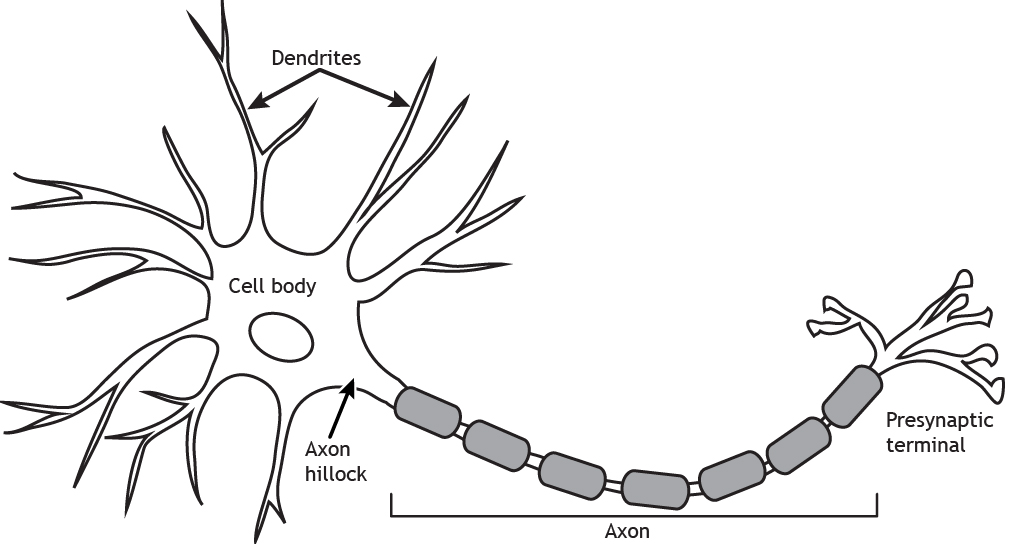ESM Welcomes College MatchPoint to the Team! Learn More

Are you a pro at exam preparation, or do you feel a little lost when you sit down to study? Read on for some new ideas for what to do while studying, and how to actually make yourself do it!
Just a week or two into my second class for my psychology major—Cognitive Science—we began a unit on memory.
I remember very little of that class as a whole, but I distinctly remember flipping through my teacher’s posted slides for that first lecture and being filled with a curious mix of fascination and sudden…. anger?
Here I was a good 15 years into my formal education, and what was on the page in front of me was the first formal lesson I’d ever had about how the human brain works to remember things, and specifically how to apply that knowledge effectively to memorize new information efficiently. It only dawned on me in that moment how bizarre that was—I’d been asked to learn as my full time job for most of my life, but though I’d been taught some note taking techniques or how to organize a binder, no one had ever really taught me how to study. What the hell, education system?
My perspective now is a little different than it was that day in class, as the next few years of my college career taught me that, while there is a lot students can learn from the formal research on memorization, learning is a complex process involving many components, which ultimately means figuring out the “best” way for any given individual to study can require a fair bit of creativity, experimentation, and adaptation to specific situations—all the knowledge in the world about how to memorize makes no difference at all if you can’t get yourself to actually do it!
I still think we could do a better job of helping students get started off in the right direction as they figure out how to learn effectively, though, so I’m going to try to help you with that a bit here.
You don’t need a deep neuroscience background just to know how to study, so I promise not to take you too far into the details today. But I do want to start by introducing you to my friend the neuron:

As you might already know, your brain is a big fleshy computer made up of billions of these weird looking things—specialized cells that talk to each other by sending messages through electrical and chemical signals.
Signals come into each brain cell at the spikey appendages called “dendrites”, and leave to connect to other cells by running down the axon and through the axon terminals, which connect to dendrites of other neurons. One neuron can be connected to thousands of other neurons through these two types of connections.
When you learn anything, from a new vocabulary word to a new dance move, what is happening in your brain is that new connections are being formed between neurons, or existing connections are being strengthened. Ultimately all forms of memory are stored in networks of connections between neurons, so your goal when learning is always going to involve strengthening the right network of connections.
If you’ve heard one piece of advice about studying, it’s probably advice to space your studying out over time, rather than cramming in the studying on one night.
The science-y term for this practice is “spaced repetition”, and it’s absolutely correct that this is the most effective way to build robust neural networks that last. When you use a network over and over again spaced out over time, you’re telling your brain that this information is going to continue to be important for long term use. Additionally, this practice is helpful because much of the physical changes that help strengthen existing connections in the brain occur primarily during specific phases of sleep, so studying material on different days with sleep in between allows the connections to be strengthened multiple times, which has a cumulative impact on the strength of the memory.
Now, you may be thinking…. But I pretty much only study the day or two before the test, and that has worked for me fine! However, while this may be enough to form connections that get you through a single test or quiz, it’s unlikely to be enough to create very lasting memories that will stay with you until midterms, finals, or a future school year where you build on this material.
Short term cramming is sometimes a necessary strategy, but try to use more efficient and robust studying schedules for material you are likely to need to use again in the future.
Okay, so you know that you want to study the same material several times over multiple days to maximize learning. But what you are actually doing in those study sessions is just as important as the timing!
Many students make the mistake of primarily studying by re-reading the textbook or teacher notes. Students find this type of “study” easy and encouraging—you see the notes and you recognize what you see, so you feel like you know it, and you’re ready for test day!
But let’s think back to those networks of neurons we’re attempting to build and strengthen. What you’re preparing to do on text day is not just recognize material, but recall information and connections between concepts. If you want your brain to deliver the information you need in response to your teacher’s questions, you need to practice doing exactly that: retrieving key information from memory based on questions or vocabulary words as cues.
This is called retrieval practice, and there are many, many ways to do it. The key commonality that all good retrieval practice methods share is that they are active and responsive—they require you to generate information out of your head in response to questions or vocab words, not just take in information a second time through listening or rereading the material.
Retrieval practice examples
Do you already have down all the ideas I’ve discussed above, and you’re feeling a little disappointed?
Here are a few more science-based techniques for improving the effectiveness of your practice.
I took my cognitive science course in my second semester of college, so I had all of this information at my fingertips early in that term and was ready to make use of it…. But that alone wasn’t enough to turn me into a master of studying.
Two classes really taught me how to study, in a sort of trial-by-fire kind of way: Organic Chemistry and Biochemistry.
Those courses required a huge amount of conceptual understanding, but also a lot of pure memorization, and each part of the learning supported the other—I could not show off my understanding well if I couldn’t recognize the words and structures on the page!
These classes really gave me a lot of opportunities to practice studying and figuring out how to do it in a sustainable way for me. As I said earlier, I think this can take a lot of experimentation and practice and is very specific to you as an individual learner. That said, I can point your investigations in some potentially fruitful directions
One of the key things I learned in my cognitive science class about learning was actually that understanding and affecting the memory part of the learning process is often the easy part.
The messier elements of emotion, motivation, and regulating our attention (focus), however, have a huge impact on how we learn, and are a lot harder to control.
Finding ways to make your studying a pleasant, or at least not painful, experience, will go a long way to helping you actually get it done.
Consider the following list of potential ideas for bringing fun or a spark of engagement to your studying. Which of them appeal to you? Which ones might be practical to try?
I will give you a word of warning–any of these tools can be misused to become a distraction from or a way to avoid studying, rather than a help. Enjoy them, but use them mindfully and be ready to set them aside or dial them back if they become more of a hindrance than a help.
Using short blocks of focused time, followed by timed breaks, can be a useful way to push yourself to focus on any type of task you are having trouble getting started on or finding focus or motivation for. Knowing that you only have a limited amount of time where you need to focus can paradoxically make the focus come easier. One common version of this is the Pomodoro method, which utilizes 25-minute work periods followed by 5-minute breaks, but you can adjust to suit your needs.
If you’re a competitive person who always got the most out of studying using competitive quiz games in class, you can still access that even if your teachers aren’t spending class time on those things anymore. Find a few friends in a class, make your own quiz sets together, and compete!
Are you the type of person who struggles to get anything done on a project just for you, but who never lets down a friend or a teammate? Or maybe you just have a lot more confidence in your own understanding when you can use it to help someone else? You may benefit from forming study groups! Ideally, you’ll want to set these up to either have regular meeting times or have assignments due to the group to ensure that everyone sticks to the plan and makes the time productive.
Does actually making studying a group project sound terrible, but at the same time… you know you’ll get more done with other people in the same room? This is actually not uncommon, and many people find their focus is boosted by sharing study time in a shared physical or virtual space without directly working together on the studying. Often people will even work on different subjects! You can either ask a friend to do this with you, or look up “body doubling” study groups online.
One of my personal favorite ways to make studying appealing was always to make studying a really pleasant sensory experience filled with reliable small joys: a cozy sweater, a nice cup of tea, my favorite pens, a specific type of notepad I always used, and a small crunchy snack. Your small things may be different, but setting the stage for “study vibes” can be a really satisfying experience… which can make it just a little easier to get started.
References